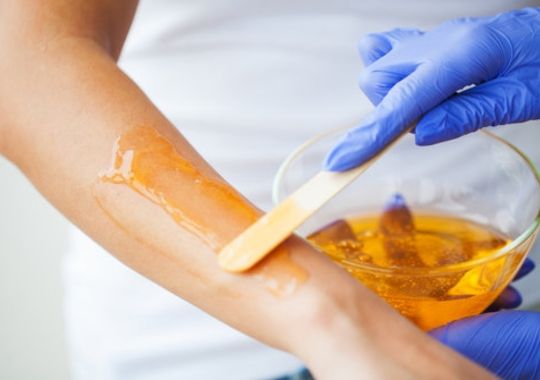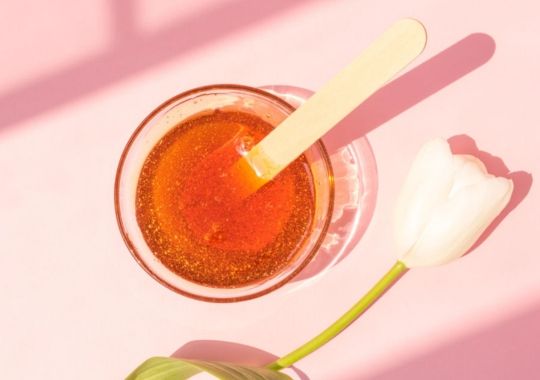Waxing is a popular hair removal method known for its ability to provide smooth, hair-free skin for weeks at a time. However, many individuals experience regrowth much sooner than expected, leading to the question, "Why Does Waxing Only Last 2 Weeks" about the duration of waxing results.
As Amazon affiliates we may earn a commission if you purchase a product at no cost to you

Watch this interesting video.
The Hair Growth Cycle: A Key Determinant
To understand the duration of waxing results, it's essential to comprehend the hair growth cycle. Hair goes through three distinct phases: the anagen (active growth), catagen (transition), and telogen (resting) phases. At any given time, approximately 90% of our hair follicles are in the anagen phase, while the remaining follicles are in the catagen or telogen phases.
During waxing, the hair is removed from the root, causing damage to the hair follicle. As a result, when the hair regrows, it tends to feel softer and finer. However, it's important to note that not all hair follicles are at the same stage of the growth cycle simultaneously. Therefore, even after a waxing session, some hairs may be in the anagen phase, ready to grow back sooner than others.

Short-Term Waxing Effects: A Two-Week Lifespan
On average, the results of waxing typically last between three to four weeks. However, this is a ballpark figure, and individual experiences may vary. Many factors contribute to the variations in waxing duration, including hair type, ethnicity, waxing frequency, and specific body areas.
Hair's Personality: Fine Vs. Thick Hair
The characteristics of your hair play a significant role in determining how long waxing results last. Individuals with fine, blonde hairs that grow sparsely may find that regrowth is less visible and appears to last longer. In contrast, those with thicker, darker hair that grows densely may notice more visible regrowth, giving the impression that waxing results last for a shorter period.
Ethnicity: Impact on Hair Texture and Growth Rate
Your ethnic background also influences the texture and growth rate of your hair. People with Mediterranean and Asian backgrounds tend to have darker, thicker hair that grows at a faster rate compared to those from European or Nordic regions. While these genetic factors are beyond our control, regular waxing treatments can help manage hair growth over time, making it appear finer and sparser.
Waxing Frequency: Finding the Optimal Interval
The frequency of your waxing sessions affects the duration of the results. If you return for a follow-up wax too soon, you may inadvertently leave behind hairs that were still in the resting phase during the initial treatment. These hairs will continue to grow, leading to a shorter period of hair-free skin. To optimize the duration of waxing results, it's crucial to give your hair ample time to grow back before scheduling your next appointment.
Synchronizing Hair Growth: Making the Most of Your Wax
Another important aspect of maximizing waxing duration is synchronizing your hair growth. It's advisable to allow your hair to grow for as long as possible before waxing, ensuring that all hairs are in the active growth phase. This synchronization allows for more comprehensive hair removal for a more gentle and effective hair removal experience.
Medical Factors: Influence on Hair Growth
In some cases, underlying medical conditions or medication can affect hair growth patterns. Hormone fluctuations caused by conditions like Polycystic Ovary Syndrome (PCOS) or certain medications may contribute to faster hair regrowth after waxing. If you suspect that a medical issue may be influencing your waxing results, it's advisable to consult with a healthcare professional for further evaluation and guidance.
Strategies for Maximizing Waxing Duration
While the duration of waxing results can vary, there are several strategies you can employ to maximize the longevity of your smooth skin. By incorporating these tips into your waxing routine, you can extend the time between appointments and enjoy the benefits of hair-free skin for longer periods.

Preparing for Waxing: Optimal Hair Length
Before scheduling a waxing appointment, it's important to ensure that your hair has reached the ideal length. On average, hair should be about one-fourth to three-fourths of an inch long for effective waxing. If the hair is too short, the wax may not be able to grip it properly. Conversely, excessively long hair can make the waxing process more painful. If necessary, trim your hair to the appropriate length before your appointment to achieve optimal results.
Consistency is Key: Regular Waxing
Consistency plays a crucial role in achieving longer-lasting waxing results. Regular waxing sessions can weaken the hair follicles over time, resulting in finer and sparser regrowth. By adhering to a consistent waxing routine, you can train your hair to grow back at a slower rate. It's important to note that the initial waxing sessions may require more frequent visits to remove all the hair in different stages of growth. However, with continued waxing, the intervals between appointments can gradually increase.
Avoid Shaving: Reinforcing Hair Strength
While it may be tempting to resort to shaving in between waxing appointments, this can negatively impact the duration of waxing results. Shaving reinforces the strength of the hair at the root, leading to more robust regrowth and shorter periods of smoothness. To maintain the benefits of waxing, it's advisable to resist the urge to shave and allow the hair to grow back naturally.
Hair Growth Inhibitors: Supplementing Waxing
In conjunction with regular waxing, the use of hair growth inhibitors can help prolong the duration of smooth skin. These inhibitors work by slowing down the rate of hair regrowth, allowing you to enjoy hair-free skin for longer periods between waxing sessions. However, it's essential to follow the product instructions carefully and consult with a professional if you have any concerns or experience any adverse reactions.
Skincare and Exfoliation: Promoting Healthy Hair Growth
Proper skincare and exfoliation are essential for maximizing the effectiveness of waxing and prolonging its duration. Regularly exfoliating the waxed areas helps prevent ingrown hairs, which can lead to faster regrowth and skin irritation. Additionally, using skincare products specifically formulated for post-waxing care can help maintain the health and condition of your skin, allowing for smoother and longer-lasting results.
Frequently Asked Questions FAQs
Why does waxing only last 2 weeks for some people?
Waxing can last only 2 weeks for some due to individual hair growth cycles. Hair grows in different stages, and waxing removes hair at the root, which can sometimes align with the faster-growing phase, leading to the appearance of regrowth sooner for some individuals.
How can I extend the period between waxing sessions?
To extend the time between waxing sessions, exfoliate before waxing to ensure the removal of more hair from the root. Following up with moisturizing and using hair growth inhibitors can also slow down the regrowth process. Over time, consistent waxing may lead to finer hair and potentially longer intervals between sessions.
Is it normal for hair to regrow quickly after waxing, and can this change over time?
It is normal for some hair to regrow quickly after waxing, especially if it's your first few sessions, as not all hair grows at the same rate. With regular waxing, hair can become finer and sparser, which may extend the time it takes for hair to regrow visibly over time.
Conclusion
While waxing results may vary depending on various factors, understanding the hair growth cycle and implementing effective strategies can help maximize the duration of smooth, hair-free skin. By synchronizing hair growth, adhering to regular waxing sessions, and following proper skincare practices.










